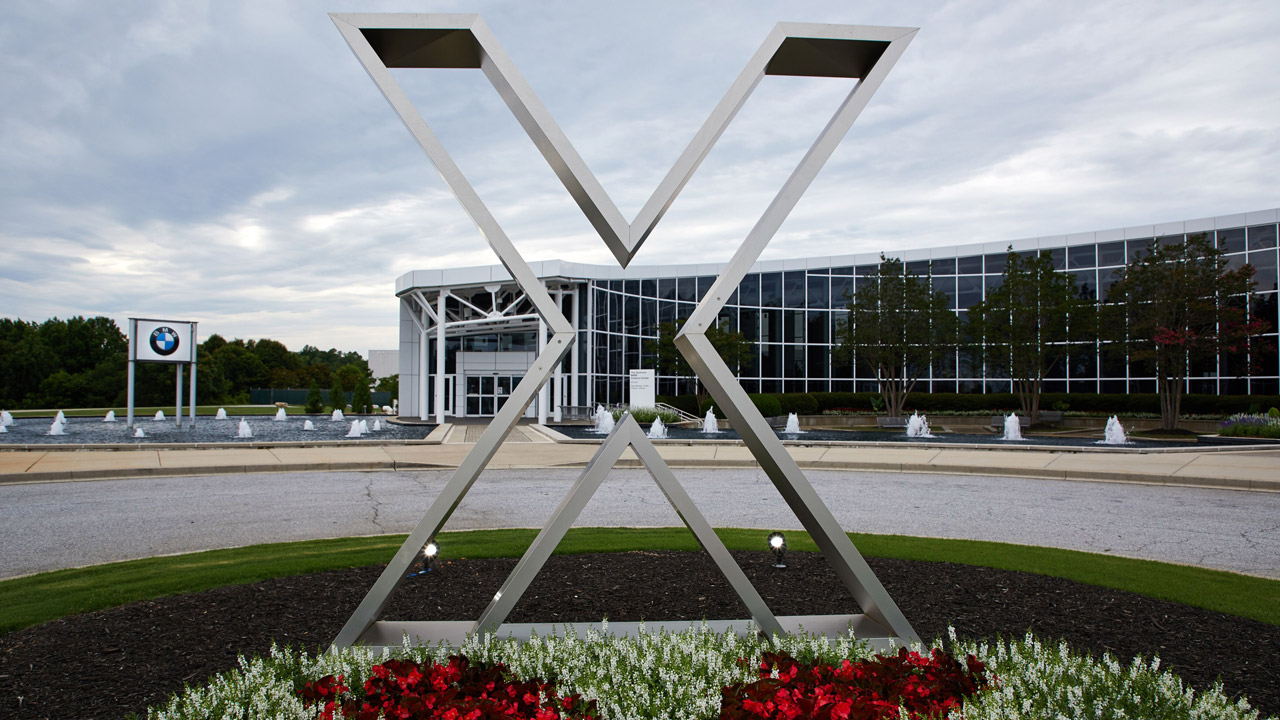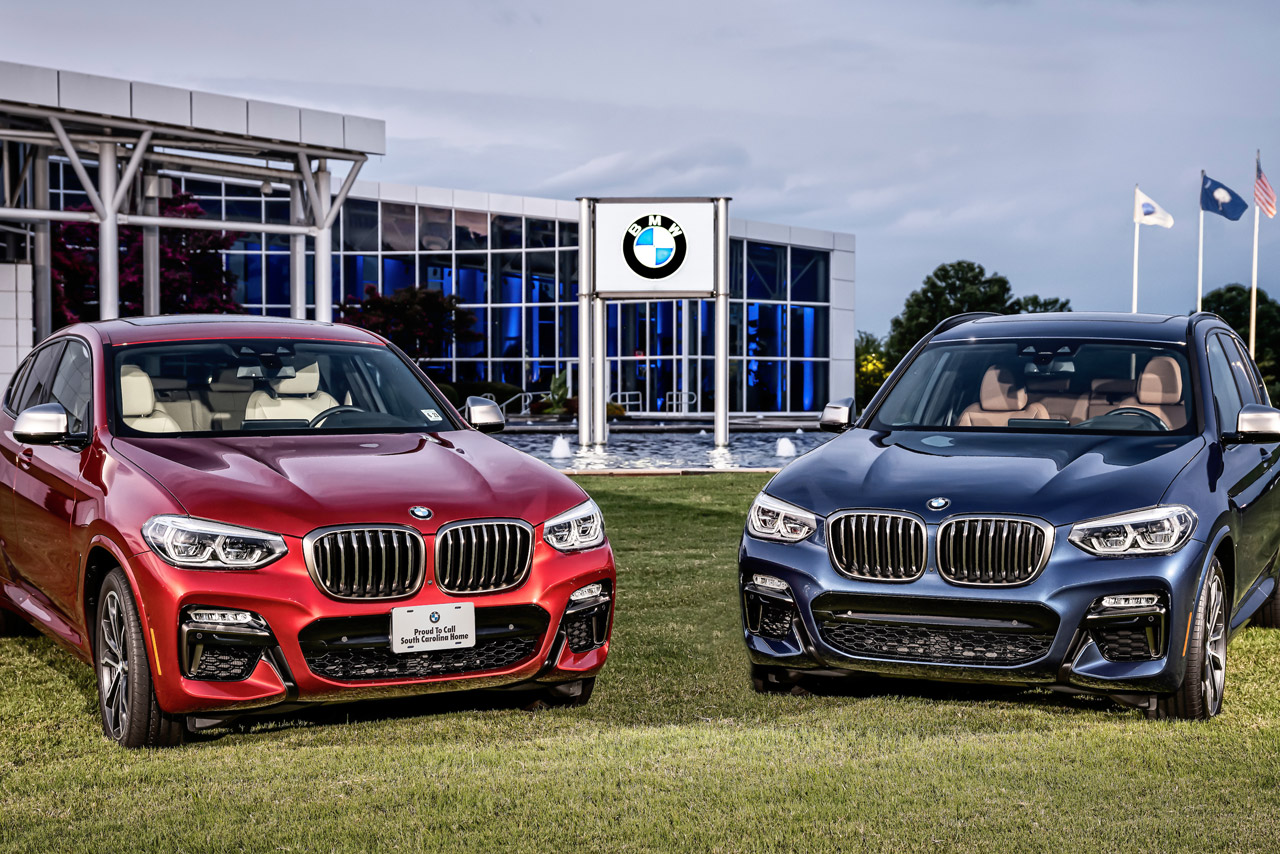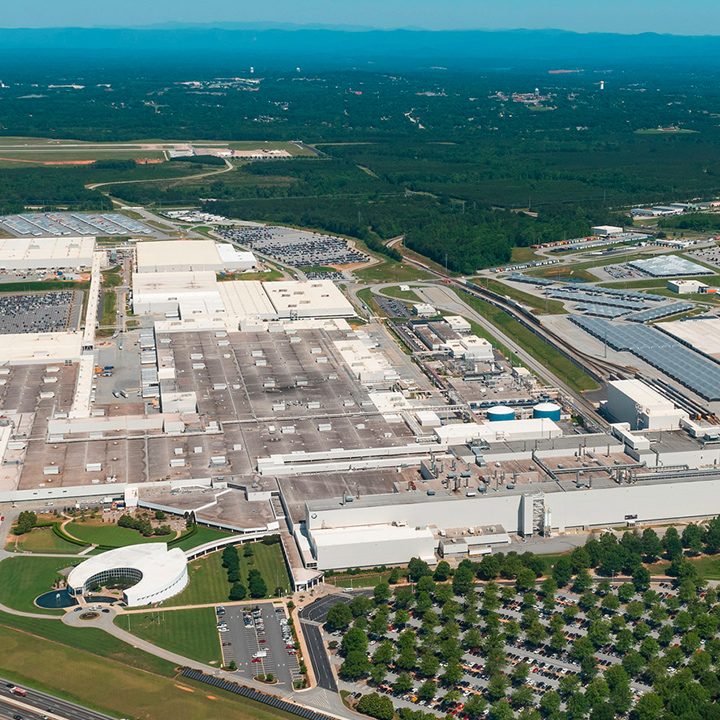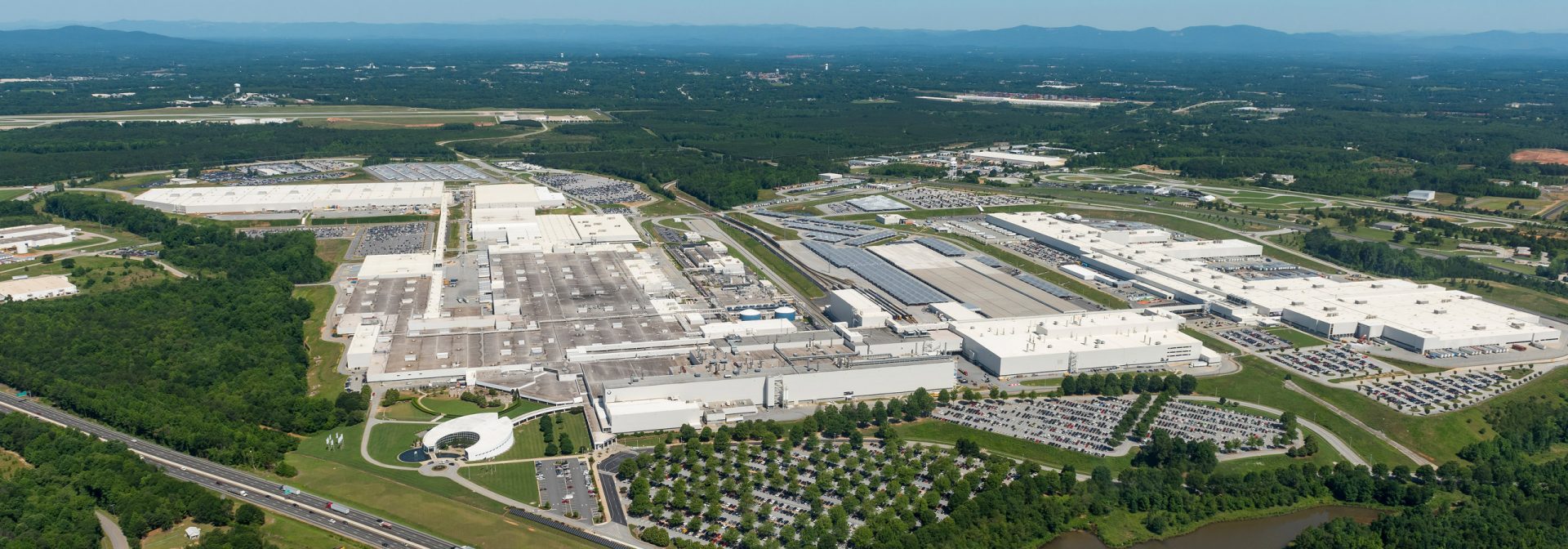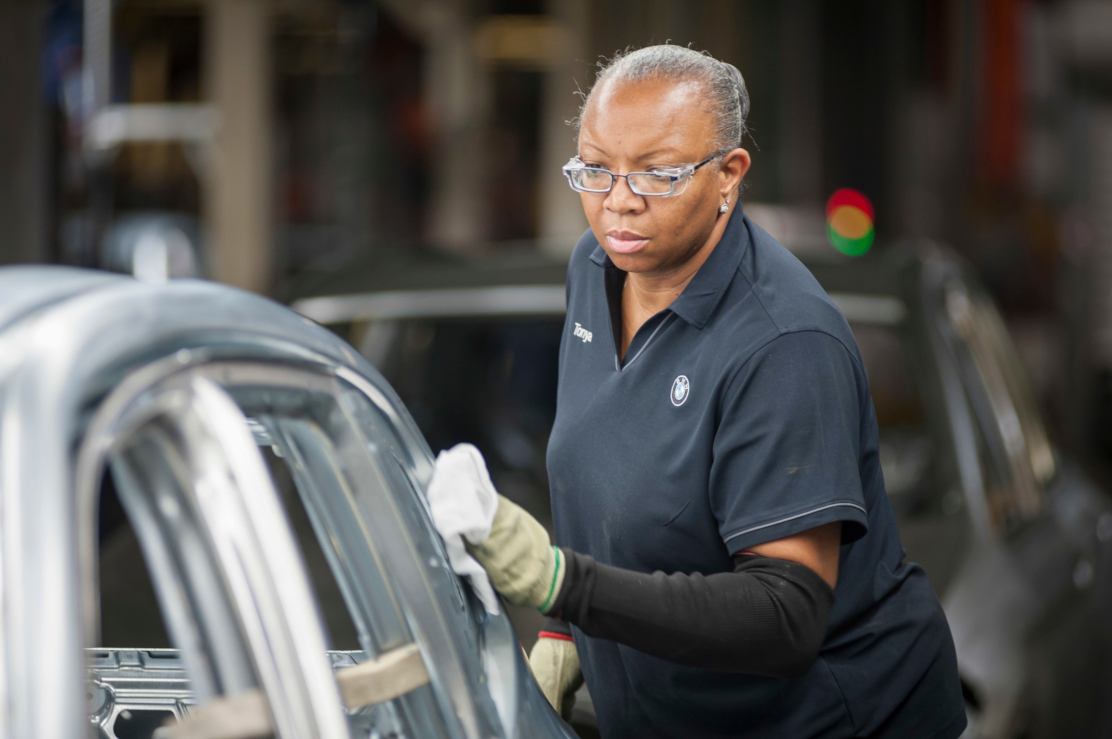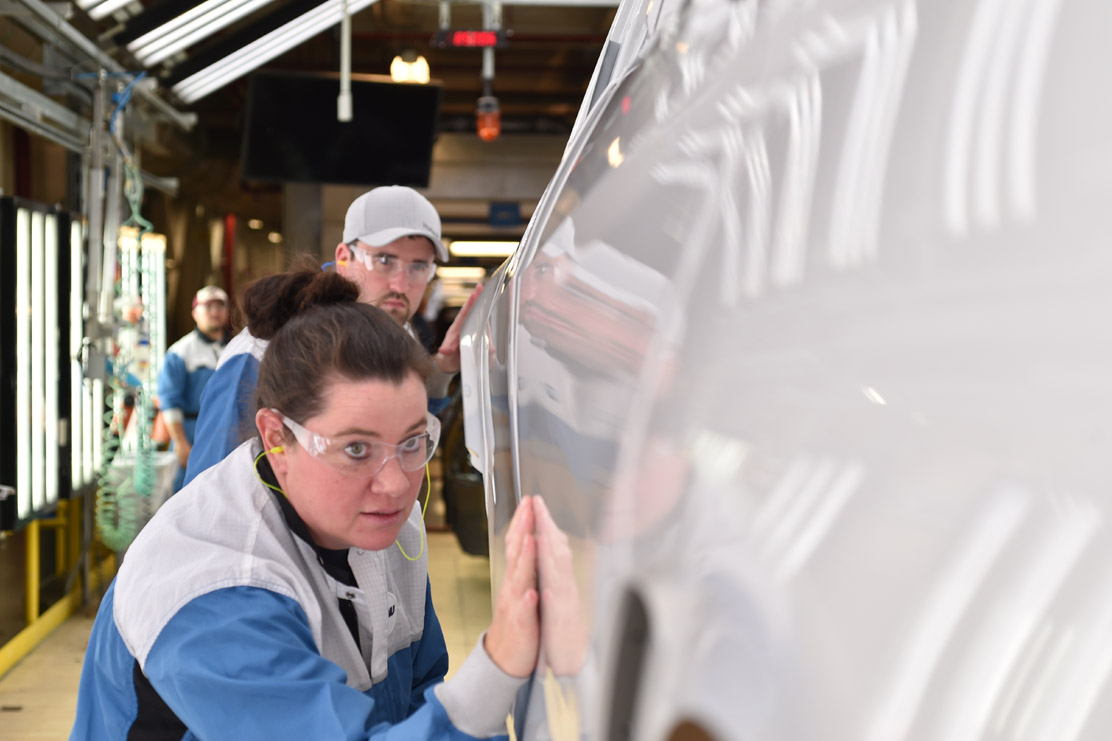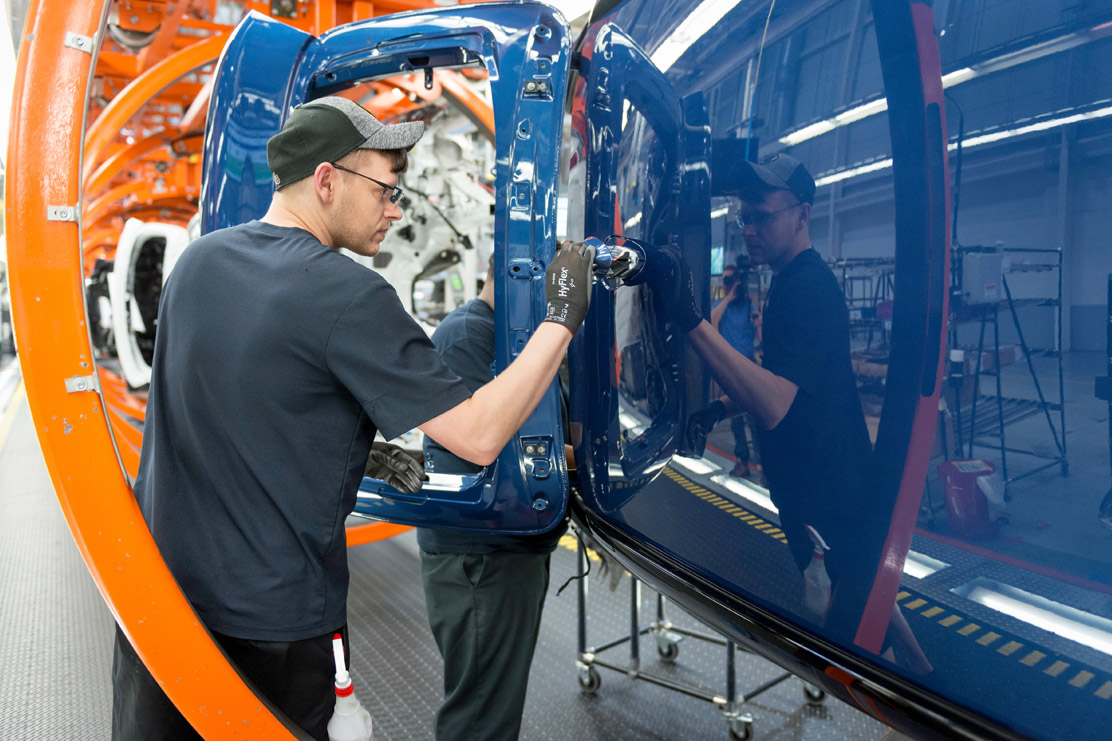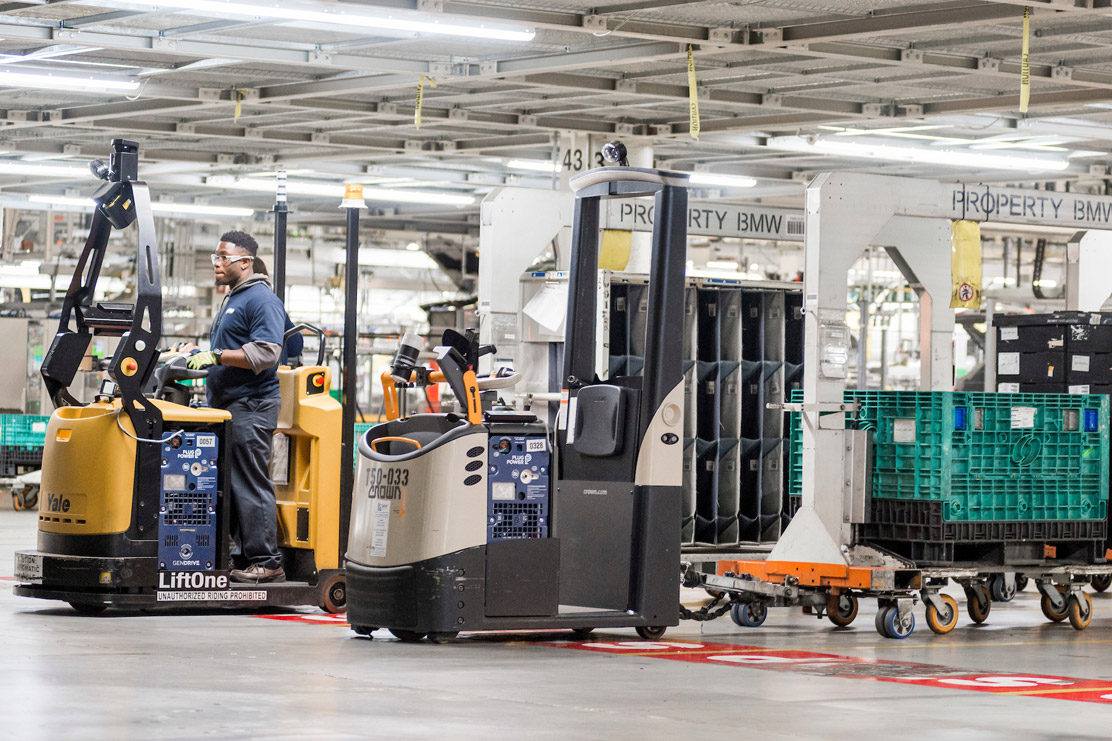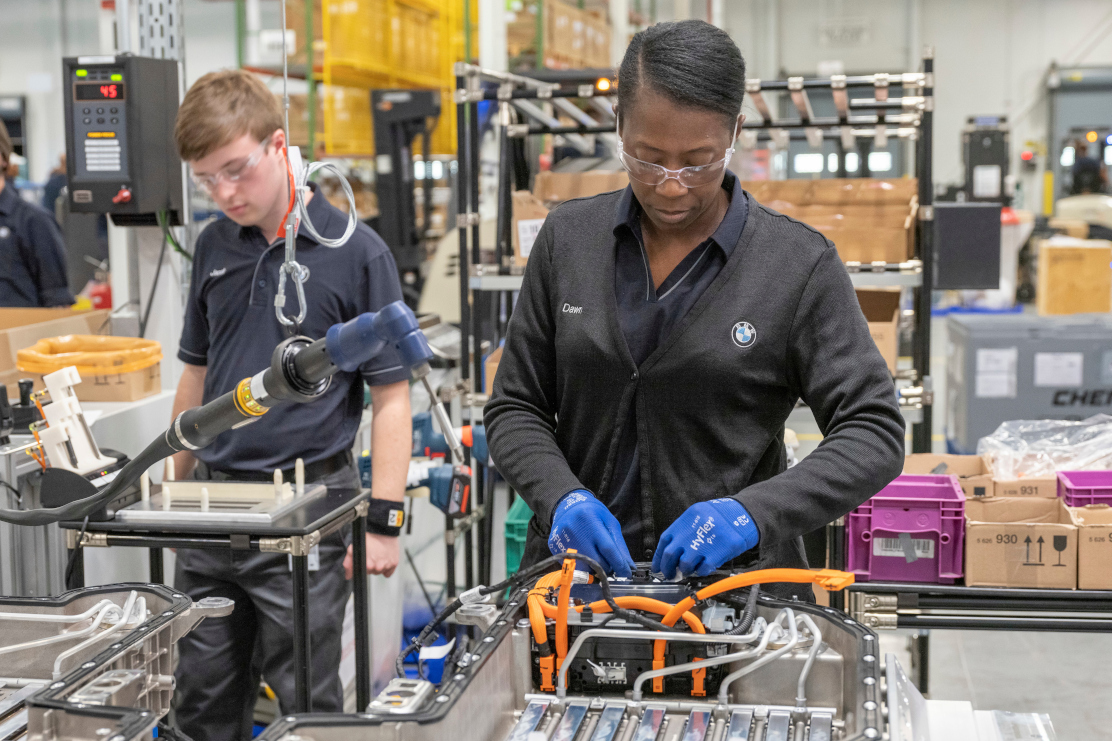BMW Manufacturing employs 11,000 people at its eight million square-foot campus. The Spartanburg plant assembles the BMW X3, X4, X5, X6, X7, and XM Sports Activity Vehicles and Coupes and their variants. For 30 years, our associates have been proud to assemble more than 6.5 million safe, premium-quality BMWs for our customers around the world. According to the U.S. Department of Commerce, the BMW Group is one of the largest automotive exporters by value from the U.S. with a total export value of about $10.1 Billion in 2023.
The main assembly lines involved in the entire process are two massive body shops, two paint shops, two assembly halls and an several logistics centers. The Spartanburg plant assembles more than 1,500 vehicles per day, running on two shifts. Sixty percent of its vehicles are exported to 120 countries around the world. Vehicles are loaded onto rail cars at the plant; then, a train transports them to the port in Charleston, South Carolina, or other southern ports, where they are shipped to Europe, China and other global destinations.
